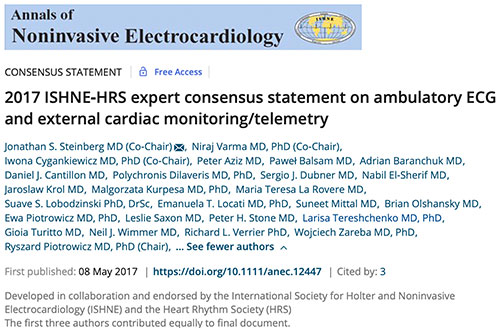RNS, 47-year-old man with known CAD (history of stent implant for right anterior descending (RAD) and circumflex (Cx) arteries one year ago), hypertension, smoker, alcoholism, and irregular use of medication. Chief Complaint: chest pain.
History of present illness: patient woke up during the night with very intense retrosternal “burning” chest pain.
- Which is the ECG diagnosis?
- Which is the culprit artery?
- Appropriate approach?
Case report:
RNS, 47-year-old man with known CAD (history of stent implant for right anterior descending (RAD) and circumflex (Cx) arteries one year ago), hypertension, smoker, alcoholism, and irregular use of medication. Chief Complaint: chest pain.
History of present illness: patient woke up during the night with very intense retrosternal “burning” chest pain.
He was admitted to the ER of the hospital after one hour from the onset of pain. The first ECG (next slide) was made and he was rapidly sent to the Resuscitation Room with decreasing consciousness. On initial physical examination he was non-responsive and without pulses, and the monitor indicated ventricular fibrillation. Cardiopulmonary resuscitation (CPR) was started immediately. Sinus rhythm was restored after the second DC shock. Since the hemodynamic lab was unavailable, streptokinase was administered in the Resuscitation Room.
Portuguese
- Descreva o diagnóstico eletrocardiográfico
- Qual a artéria culpada e porque?
- Qual abordagem adequada?
RNS, masculino de 47 anos de idade, portador de doença arterial coronária (DAC) conhecida, com relato de implante de stents para a arteria descendente anterior (ADA) e circunflexa(Cx) há um ano. Hipertenso(em uso irregular da medicação) fumante, elitista.
Queixa principal: dor no peito.
História da doença atual: refere que acordou durante a noite com dor no peito retroesternal muito intensa em "queimação". Deu entrada na sala de emergência(SE) do hospital após uma hora do início do episódio. O primeiro ECG da admissão se mostra na próxima diapositiva. O paciente foi enviado rápidamente para a sala de reanimação com diminuição do nível de consciência. Não responsivo e sem pulsos ao exame inicial, e o monitor mostrava fibrilação ventricular(FV). Iniciadas manobras de Ressuscitação cardiopulmonar (RCP) imediatamente. O ritmo sinusal foi restabelecido após o segundo choque elétrico. Como o laboratório de hemodinâmica não estava disponível, optou-se pela admistração intravenosa de estreptoquinase.
 Authors: Raimundo Barbosa-Barros, Andrés Ricardo Pérez-Riera & Frank Yanowitz
Authors: Raimundo Barbosa-Barros, Andrés Ricardo Pérez-Riera & Frank Yanowitz
Further Discussion and Final Comments
Download »file






